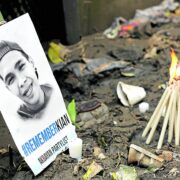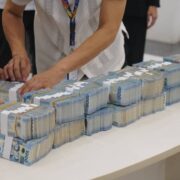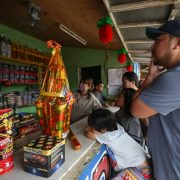Romancing the Quonset hut (1)

The forgotten shelter that survived Tacloban’s 1944 superstorm. Not far from today’s ruined shoreline of Tacloban once stood a US naval base that faced another monster storm— long before Supertyphoon “Yolanda” or Haiyan made the city a global byword for loss.
In December 1944, Typhoon “Cobra” struck Leyte with 225-kilometer-per-hour winds and a 6-meter storm surge. Contemporary records show that the typhoon destroyed 80 percent of all structures on the base—except for 39 of 43 Quonset huts, which remained intact. Four others suffered only bent panels and torn seams. Engineers concluded that anchorage and geometry, not cost or material thickness, determined survival.
That small statistic—Tacloban 1944—may be one of the most important but least remembered chapters in Philippine resilience history. For those semicircular corrugated-steel huts, conceived in wartime Rhode Island and shipped 16,000 km through submarine-infested seas, had already solved problems we still agonize over today: rapid shelter construction, climate resistance, modularity, and affordability.
The engineering of necessity. The Quonset hut emerged from a desperate American wartime equation. Canvas tents rotted within weeks under Pacific monsoons; wooden barracks required carpenters and timber that many islands did not have. In early 1942, a team led by Otto Brandenberger was told to design a structure that could be manufactured in the United States, shipped flat, assembled in one day by untrained hands, and survive typhoons, monsoons, and 130-degree heat.
Their solution broke every architectural rule. They eliminated internal wooden frames, letting the corrugated steel skin itself carry the load in compression. The curved arch deflected wind and shed rain like a seashell; the ridges stiffened the thin metal as though each were a tiny L beam. Panels bolted together into a continuous ring, making the entire hut act as one enormous spring. It could flex, not fight, the wind.
By 1944, over 160,000 Quonset huts dotted the Pacific—from Guadalcanal to Samar—housing 6 million troops. When Typhoon Cobra hit the Philippines, their field test became legend among engineers: the aerodynamic hut endured while concrete crumbled and wood disintegrated.
From war relic to Filipino backdrop. After the war, thousands of surplus huts found new life across the archipelago. In Manila and Quezon City, they became classrooms, dormitories, and chapels. At the University of the Philippines in Diliman, students in the 1950s ate, socialized, and even bowled in Quonset huts between Vinzons Hall and Narra Residence. They were the quiet cousins of another wartime leftover—the US Army jeep that Filipinos transformed into the jeepney.
Yet, while the jeepney entered our cultural imagination, the Quonset hut faded from view. Few remember that it had withstood a superstorm in Tacloban seven decades before Haiyan, or that it embodied the very principles we now call build back safer.
A missing page in our resilience memory. Why does this matter? Because the Philippines remains a frontline laboratory for climate extremes. Each year, we rebuild as if starting from zero—forgetting that we once built smarter. The Quonset hut is not nostalgia; it is a manual for survival written in corrugated steel.
The Quonset hut idea is an innovation challenge for our youthful engineers, architects, and builders. Here’s how it might look with bamboo and local materials mixed in: (1) arch-based compression shell: can be replicated with engineered bamboo ribs and woven bamboo (sawali) or composite skins (marine plywood); (2) flat-pack logistics: mirrorable with locally prefabricated kits; (3) elevated foundations: adopt the wartime tension-anchor idea using screw piles or concrete stilts in flooded plains; and (4) ventilation systems: incorporate ridge vents and end-louvers as in the 1945 tropical versions.
Quonset huts design teaches that speed and strength can coexist; that ordinary people can assemble safety with basic tools; that geometry can substitute for expensive materials; and that design—when driven by necessity and tested by wind—can save more lives than speeches about corruption ever will.
When Yolanda flattened Tacloban in 2013, no one invoked that earlier storm, that earlier proof of concept. The Philippines had forgotten that it once hosted a global benchmark for storm-resistant architecture. Our institutional memory, like many of our archives, had rusted away.
The Quonset hut deserves to be romanced again—not as scrap metal, but as inspiration. It is time to revisit this humble arch that once protected soldiers and students alike and ask what it can teach a nation still rebuilding roofs after every typhoon.
(To be continued next week—”How the Quonset hut can help us build the future.”)
—————-
doyromero@gmail.com


















